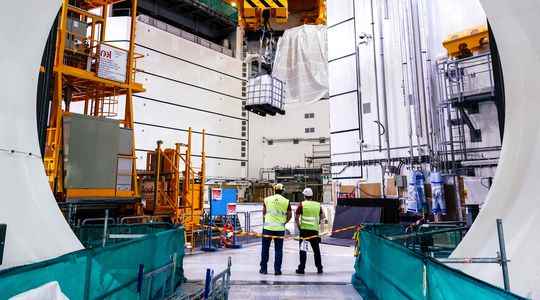Seen from Helsinki, this is not entirely a surprise. The government, like the ecologists, are also pretending to relativize what, seen from France, is neither more nor less than an ecological thunderclap. Because at the beginning of June, 400 members of the Green League, gathered for an annual conference in the town of Joensuu, officially converted to nuclear power, now considered in the party manifesto as “a sustainable energy”. The Green Party now wants to reform the country’s energy legislation to launch small reactors. Questioned by L’Express, Veli Liikanen, the general secretary of the party, pays lip service to this update. “We have not adopted an entirely pro-nuclear position, he specifies by e-mail. I would rather say that our new political program is more neutral than before with regard to nuclear energy, especially with regard to relates to the development of new technologies.
The reality is that under the impetus in particular of a pro-science lobby within the Green Party, Finnish ecologists have completed a transformation that began almost a quarter of a century ago, when they joined government teams . Regularly in business for three decades, they had however repeatedly opposed the country’s nuclear projects, which had led them to leave the government on two occasions.
The war in Ukraine changed the situation
The Finnish Greens, which won 11.5% of the vote in the 2019 elections, securing the presence of 20 deputies in Parliament and two ministers in the coalition government led by Sanna Marin, are in phase with public opinion public of the country, increasingly favorable to nuclear energy (74% for, 18% against). A choice that is above all a matter of pragmatism: for the Green League, led by Maria Ohisalo, the priority consists first of all in reducing the use of fossil fuels. Helsinki, which has set itself the goal of achieving carbon neutrality by 2035, is counting in particular on the civilian atom – very low emitter of CO2 – to achieve this.
Already, the four reactors in operation provide nearly 27% of the country’s electricity consumption. The recent start-up of the new Olkiluoto-3 reactor should, when it runs at full capacity, supply the country with 14% of its electricity. After a delay of twelve years, the inauguration of this new plant is timely: the war between Russia and Ukraine and announcement of Finland’s candidacy for NATO has indeed upset the energy deal in the small Nordic country, with the halt in May of Russian electricity and gas deliveries, as well as the abandonment of a project for a future nuclear power plant with the Russian Rosatom. “The reality is that the change of program of the Greens or the effects of the war between Russia and Ukraine do not modify our energy strategy in any way, comments Liisa Heikinheimo, deputy director of the Energy Department of the Ministry of Economy. , in Helsinki. These events only reinforce the pragmatism of our citizens and the acceptance of nuclear power, which has never been higher.”
The members of the Green League are not the only ones to change their religion. Witness the Finnish section of Fridays for Future, the movement created by Greta Thunberg, who recently declared that she disagreed with the latter because he is still opposed to nuclear power… The Finnish exception could quickly be noticed.
